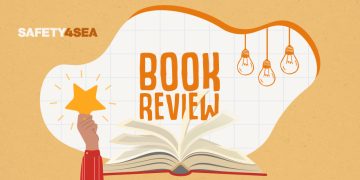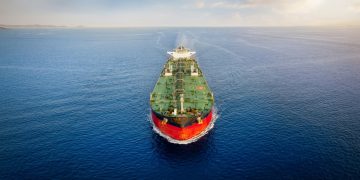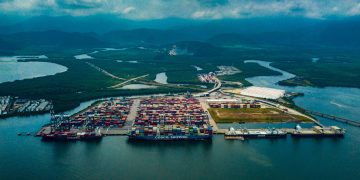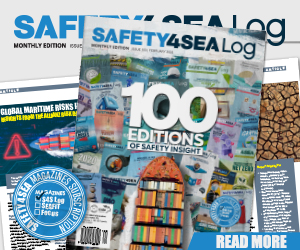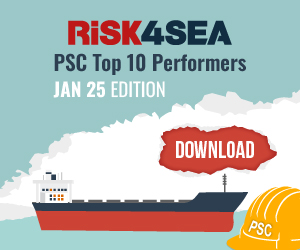Lloyd’s Register’s Maritime Decarbonisation Hub (The Decarb Hub) and Mærsk Mc-Kinney Møller Center for Zero Carbon Shipping (MMMCZCS) release new reports to help meet the upskilling needs of an estimated future 800,000 seafarers as the industry transitions to alternative fuels.
With the maritime industry under pressure to reduce carbon emissions, ammonia is gaining popularity as a promising alternative fuel, as evidenced by LR’s Fuel For Thought Ammonia report. However, many are unaware of the unique hazards associated with ammonia, including toxicity, flammability, and material incompatibility, and how to handle it safely, efficiently, and in an environmentally responsible manner.
The reports outline a roadmap for the industry to prepare seafarers for ammonia-fuelled ship operations, detailing minimum regulatory requirements, basic and advanced competencies for seafarers, and role-specific training for onboard and shore-based personnel.
In particular, the proposed framework is consistent with STCW specifications for basic and advanced
standards. Required standards, expressed as competency statements, are broken down into three areas: knowledge, understanding and proficiencies (KUPs).
Seafarers need knowledge of:
- the key characteristics of ammonia, such as toxicity, flammability, explosivity, corrosion and material incompatibility
- a ship’s ammonia-related systems and equipment, including storage
- ammonia’s physical and chemical properties
- hazards and hazard controls of ammonia
- occupational health and safety precautions and measures
- how to respond to emergencies, such as leaks, spills, fires and explosions
- pollution prevention mechanisms
Seafarers will need understanding of:
- the specific operational and maintenance regimes required by ammonia
- fuel changeover procedures
- how approaches to emergency response differ on board ammonia-fuelled vessels
- how processes change with increased automation
- the legislative requirements with which they must comply
Seafarers will need new skills and proficiencies in:
- operation and maintenance of ammoniarelated equipment, including increased use of automation to enable remote operations
- handling of ammonia storage, transfer and handling systems applicable to pressurized and refrigerated ammonia or a combination of both.
- use of new materials
use of new types of instrumentation and control systems - use of new types of detection and monitoring equipment
- use of different personal protective equipment (PPE)
While the initiative was underway, the MMMCZCS conducted an industry acceptance survey, which revealed a great degree of willingness to work on ammonia-fueled vessels, and moreover that this level of heightened acceptance is contingent on comprehensive training programmes.
The three reports from the collaboration are a project summary report, a technical report that addresses training standards, and a second technical report that delves into competencies for certain operational, maintenance, and emergency-response scenarios.
To aid in impending seafarer safety:
- Shipping companies are urged to conduct gap analyses, update corporate policies, and invest in seafarer upskilling initiatives.
- Regulators and flag states must work together to incorporate ammonia-related safety measures into global maritime training standards.
- Training providers are advised to develop transition journeys for seafarers and shore-based staff and update training facilities to include practical training with ammonia.
This latest report, representing Phase 3 of the partnership, follows earlier studies on vessel design and operations and human factors considerations for ammonia-fueled vessels.
Alan Jones, Human Safety and Risk Director at The Decarb Hub, said: “The maritime industry will continually need this type of interactive collaborative action, which clearly provides exceptional outcomes, disseminating unambiguous evidence of how the industry needs to move forward.”
Martin Eriksen, Head of Safety Leadership & Operations at MMMCZCS highlighted that existing frameworks must incorporate specialised knowledge about the unique characteristics and hazards that accompany this fuel.” Understanding their specific chemical and physical properties, handling requirements, safety protocols and emergency response strategies are a few indicative areas for intervention. ”
The organizations call for IMO and its members to consider this information and take appropriate action to account for ammonia as fuel in the regulatory training framework, enabling interim guidance on training for alternative fuels to be published with priority.
By leveraging the knowledge and calls to action shared in these reports, the shipping industry can help realise a green transition for maritime that puts safety at the centre.
In recent years, several ship operators have committed to adopting ammonia as a marine fuel to reduce carbon emissions and advance sustainable shipping practices. For instance, Nippon Yusen Kaisha (NYK) has completed the world’s first ammonia-fueled tugboat and is constructing an ammonia-fueled medium gas carrier, scheduled for completion in November 2026. Mitsui O.S.K. Lines (MOL) has recently conducted the world’s first ammonia ship-to-ship transfer and is designing a 210,000-DWT ammonia-powered bulk carrier.
Furthermore, in April 2024, Eastern Pacific Shipping strengthened green collaboration with Maritime and Port Authority of Singapore with six Singapore-registered ammonia dual-fuel newbuilds. At Posidonia 2024, the Korean Registry granted an Approval in Principle (AiP) for Samsung Heavy Industries’ 150K ultra-large ammonia carrier and signed an MoU with them to develop 9,300 TEU ammonia-fueled containerships















